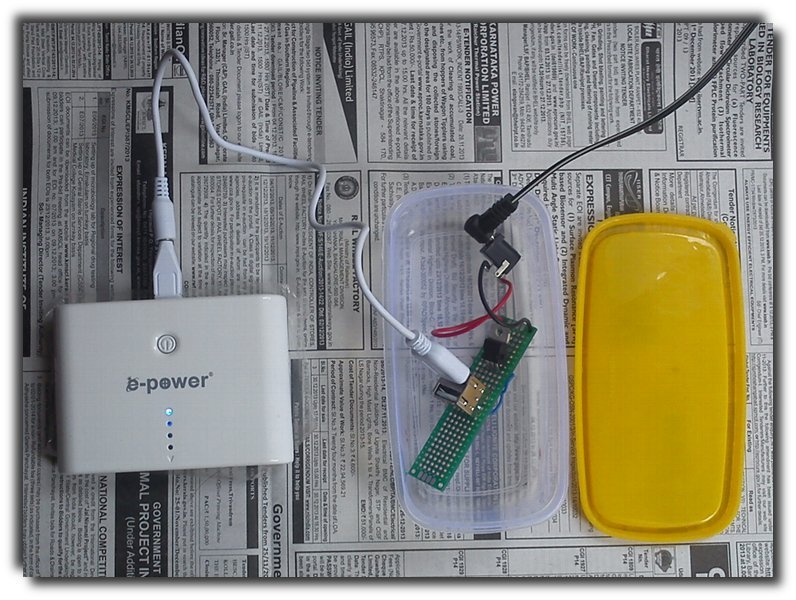Tagged: battery charger
My 5-volt, tablet-battery-powered, dual-LM386 boombox stereo FM/MP3 music system
LM386 is a mono amplifier IC. I couldn’t find a stereo version of it that was just as robust and simple. So, I designed a circuit with two LM386 chips. That was several months ago.
In the meantime, my BlackBerry Playbook refused to charge. Because of disuse, the battery deep-discharged. There are many videos online offering all kinds of solutions but none worked for me. BlackBerry decided, in their infinite wisdom, to control the charging process using a novel logic, which absolutely refused to charge the battery if the voltage went below some limit. After dismantling the tablet beyond repair, I realized that I could have saved the tablet by opening the plastic cover & directly charge the terminals.
Well… I then had two good tablet batteries and a broken tablet. I decided use it for something. These were high-capacity batteries but like phone batteries output only 3.7 volts.
I got a phone battery charging circuit board that took 5 volts in. It has two LEDs – charging & fully charged. The board also has two load terminals from which you could draw 3.7 volts just like a phone would.
My MP3/FM module requires 5 volts so I added a voltage boost (step up) circuit board.
My attempts to repurpose USB cables from discarded devices failed because they burned off internally during soldering. Hence, I fashioned my own USB cable.
I made a wooden housing for the player. The speakers have neodymium magnets and sound super loud. This is interesting because the stereo LM386 amplifier circuit runs off the same 5 volts. The MP3 module has FM, SD card, line in & USB. It is the same kind as those cheap Chinese FM/MP3 amplifier sets found in autorickshaws.
How to recycle laptop batteries – create low-cost DIY USB power banks with 18650 charger cases
USB power banks are selling for very high prices. Most provide 2000 to 3000 maH of charge. Some give 5000 mAH but cost around 6,000 rupees! Buying these expensive power banks is stupid. I bought a 20,000 maH power bank for Rs. 1500 but the downside of that is that it take 2 whole days to charge. There is no point in going overboard like that either.
Instead, buy USB charger cases for 18650 type battery. Don’t buy the 18650 batteries. Take them out from an old laptop battery. Laptop repair shops and IT waste recycling units may have stock. Take care when you remove the cells from the laptop battery. The solder on the cells are quite sharp and will tear your flesh easily.
Once, you have removed the cells and brushed off the excess metal and solder, they are good to use in one of these charger cases. They even have a LED that makes the power banks usable as torches!

Solar Panel-Powered Phone-Battery Power Bank with LM7805 USB Voltage Regulator
I wanted a phone battery power bank with a built-in solar panel. This would not have worked, as my house does not get direct sunlight. However, I have a 7v solar panel that came with a BPL emergency light. I put the solar panel on the terrace and brought its wire down to the balcony.
I could not simply connect solar panel to a power bank, as most power banks work at 5 volts. So, I built a voltage regulator module using a LM7805 IC. This dropped the voltage down from 7v to 5v. The circuit is simple. Connect the solar panel to a 2.0 mm DC power socket. Connect the two leads of the socket to the first two legs of the voltage regulator. The first leg is connected to the positive of the socket. The second and middle leg is the ground, which is shared with the output. The middle and third legs are connected to the ground and positive of the USB port.
I only had a dual-USB connector and used it anyway. This was not a bad choice. The extra surface area give its legs better anchorage. The power bank is supposedly 20,000 mAH. After I took it out of the package, I was able to charge a BlackBerry Book and one-thirds of a Micromax FunBook, both of which require 3 or 3.5 hours of charging. Now, it is charging. I have only a couple of hours of sunlight today.

The solar panel is connected to my voltage regulator module. The 7v from the panel is dropped to 5v and supplied to the power bank. The power bank does not work with ordinary USB cables. It requires the cable+mini USB attachment that came with the package.
UPDATE (22 December 2013): I added a 1n4007 diode to prevent current flowing in the other direction when the voltage coming in from the solar panel falls down drastically. The power bank may already have the diode but I am not sure. Whether this diode would be appropriate is also something I don’t know. It is a diode and I used it. When I connect a 3.7v phone battery at the USB end, I can still measure 0.1v at the DC plug end to which the solar panel has been connected.

A diode has been added to prevent current from flowing in the opposite direction when the voltage from the panel drops below that of the batter.


